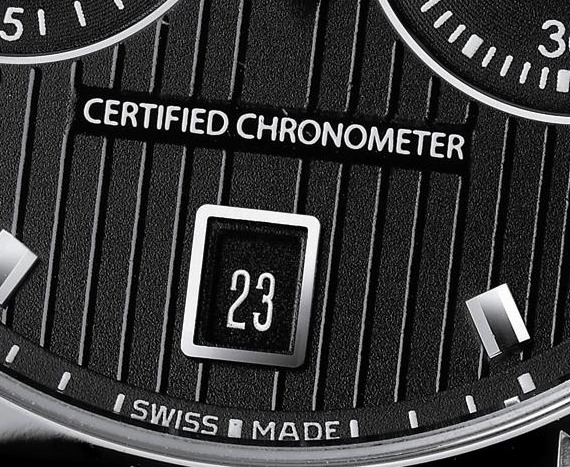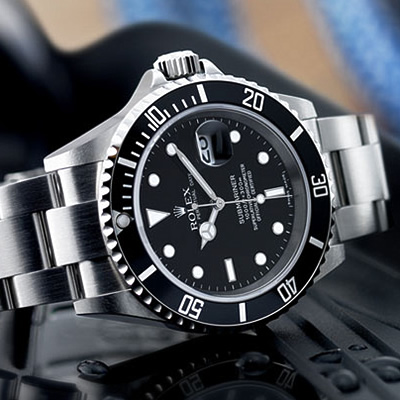
For $1,000 And Up Watches:
Once you have realized that getting a watch is a practice of passion and taste, you start to have higher expectations. Plus, your foray into the world of horology has led you to realize a few things. Among those things are that you want a mechanical movement over a mere quartz movement, and that names are beginning to have meaning to you when it comes to selecting favored watches. Not only that, but you also learn that just because fashion labels make nice clothes they aren’t always key players in the luxury watch world (e.g. Kenneth Cole), despite the fact that they do indeed have a watch line. You might also be the type of person that grew up around watches and simply have more sophisticated tastes. Whatever the reason is, if you are going to spend $1,000 or more on a watch, these are factors you’ll want to consider when getting a medium range luxury watch.
1. Mechanical Movement
Save for limited circumstances, if you are buying a men’s watch for over $1,000 it will most likely have a mechanical movement. If it doesn’t, you’ll want to make sure it is a pretty special type of quartz movement such as Superquartz (like Breitling’s thermoline quartz movement that is accurate to 5 seconds per year). Otherwise, the name of the luxury watch game is having the best possible mechanical movement. Why? This is not an easy question to answer, to be honest, because quartz watches are actually more reliable and accurate, for the most part. Still, a mechanical watch movement never needs a battery, represents the classic way of making watches, and offers a certain emotional value that the “tick, tick, ticking” of a quartz watch simply cannot offer.
2. Anti Reflective Coating
The enemy combatant here is “glare,” and you want as little as possible when trying to read the face of a watch. Compare the dial of a higher-end versus less expensive watch in the light, and you’ll see what I mean. Similar to the anti reflective (AR) coating on glasses, on watch crystals, the coating really can improve legibility dramatically. There are two places that AR coating is applied, being on the front and rear of a crystal. Preferably you want the coating on both sides, but you should at least want to have it on the bottom. One issue with AR coating is that it can wear or scratch off and may need to be reapplied, or a new sapphire crystal be required if you beat up your watch too much. Lastly, the more curved a sapphire crystal is, the more likely you are going to want full AR coating on it, which is often referred to as “double AR coating” (applied to both sides of the crystal).
3. Screwed Links In Bracelet
This is a pretty simple concept. Metal bracelets are made of links that are connected together. The two types of items used to hold the links together are screw bars or pins. Pins are small rods that come in various styles and qualities. They are pressure applied using a small hammer or device that inserts them in the bracelet. To adjust the bracelet, a small pressure tool must be used to remove pins and then reinsert them. Alternatively, you have small screw bars that go into a bracelet using a tiny screw driver. These are considered better, because they are higher quality, look nicer and will last longer. Both types of link bars can be adjusted by you, if you have the right tools. Sometimes a heat sensitive glue is used to hold screws in place which should be heated up to allow for unscrewing.
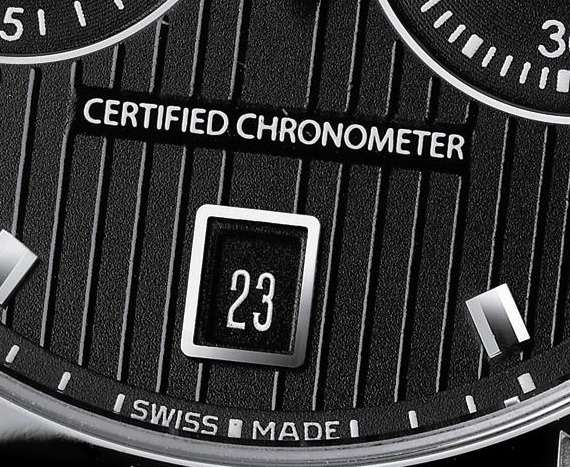
4. Chronometer Certification
This is something that not all mid range (or high range) luxury watches have by any means, but can add value and reliability to your watch. In fact, only a very small percentage of Swiss watches are COSC Chronometer certified. Chronometer certification is a process where a watch movement is sent to the COSC and tested over a period of days. The movement is running and tested in various different positions. This testing is specific to each movement, so it is more than simply a test of the movement design. During the testing, a watch’s rate results are observed to determine overall how accurate it is. For a watch to be Chronometer certified, it must be accurate within -4/+6 seconds per day on average between all positions – meaning a movement cannot lose more than 4 seconds or gain more than 6 seconds a day. Just because a watch is not COSC certified does not mean it would fail the test, but rather that the movement hasn’t been sent to the COSC for testing. Learn more about Chronometer certification here. Having a movement that has been Chronometer certified helps you appreciate the reliable nature of the movement and add an additional part of the watch’s “life story.” Quartz watches can also be Chronometer certified, but have a different set of accuracy criteria.
5. Quality Case Finishes And Polishes
Do you remember what real chromed metal was? It was that super mirror polish on steel that was hard to achieve and needed to be constantly polished. It was hard, and it was beautiful. While the look of chrome was popular, its costliness was not. As at some point, fake chrome was invented. My memories of fake chrome were from the 80s, when you’d see it peeling and flaking off of cars. That was not real chrome, that was some cheap coating or surface over cheaper sheet metal. Take this concept and apply it to watches. Not all nice-looking watch surfaces are real, or even well done. At the highest level, you have milled steel blocks that are precision cut and then polished by hand. On the cheapest end, you have stamped or injection molded metal that is not as nice or durable. The better the metal underneath, the better the polish and finish can be on the surface. The reason I use two terms is because “polish” is often the term used for that mirrored high glossy look. While metal that is brushed or in a satin style is known as being “finished.” Just a slightly difference of terminology, but they are often used synonymously or together. Like “polished finish.” But it wouldn’t feel right saying “brushed polish.” Some of the best cases have different types of polish on them. And not all polishes result in the same look. Say the sides of the case are polished but the top is in a brushed metal finish. A lot of this comes into play on higher end watches, but in a mid range luxury watch, you want to closely inspect the metal to see how well done the edges are, and also make sure that whatever finish or polish that is on the metal is neatly and evenly applied, as well as directly on the metal, as opposed to some coating that will peel or wear off. Anyone who has had cheaper watches can attest to how this can occur inside of a metal bracelet. Overall, a good polish will preserve its look for a long time, while a cheaper polish will fade fast.
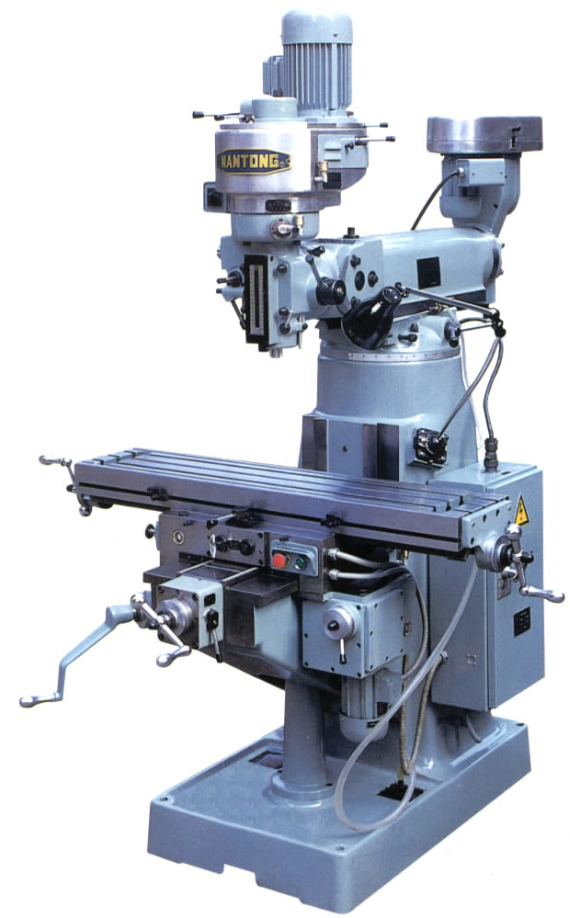
6. SuperLumiNova Luminant
Just because a watch has a luminant compound applied to the hands or face, does not mean it will glow well in the dark. I’ve tested cheaper luminants that need to be directly placed in front of a very bright light source for 30 seconds to really shine at all. After that they glow in a dull manner for maybe 10 minutes at best. This is not how good luminant should work – and at $1,000 and up, you deserve a quality lume if you are getting a watch with applied luminant. Of the best luminants is SuperLumiNova. It is certainly the most popular quality luminant, but not the only one. Thus, if there is a luminant that is known to work well, but has a different name, they you are probably ok. Right underneath SuperLumiNova in terms of quality is just “LumiNova.” If the luminant has no special name like “SuperLumiNova” or something else that sounds fancy, it is probably cheap and won’t work too well. Having a good luminant compound is just step one. A watch should also have enough layers of the luminant and it should be on a large surface area. Testing a luminant is easy. It should not require bright lights to charge in, and simply cupping your hands over the watch should be enough to have the shine of the luminant pop out. So do yourself a favor and make sure you get a watch with a good luminant compound, if it has luminant at all.
7. Brand Pedigree
This is a bit of a though topic to explain, because you have all of those mainstream brands that people are familiar with, and then you have many lesser known brands that are sometimes much better than the mainstream brands. Because there are 100’s of watch companies out there, you can’t rely on name recognition alone to identify whether a brand is worth getting. Instead, if you aren’t familiar with a brand, see that it has at least some story behind it and perhaps has a story behind the designs as well. You may be thinking, “well if the price is right and the watch looks good, who cares?” You’d be surprised how important the “story” of a watch and its brand are. Just ask any collector about brand or their favorite watches. I promise you at least some of the lecture will go into discussing the history or unique construction of the watch or its design. So what I mean by brand pedigree is to look for either well-known brands known for making good watches or iconic designs (“this watch is the ‘Audi’ of the timepiece world”), or a brand with a special story or interesting founder that themselves engages in most of the watch making and design process. If you aren’t familiar with a brand and unsure about them. Ask someone who knows.
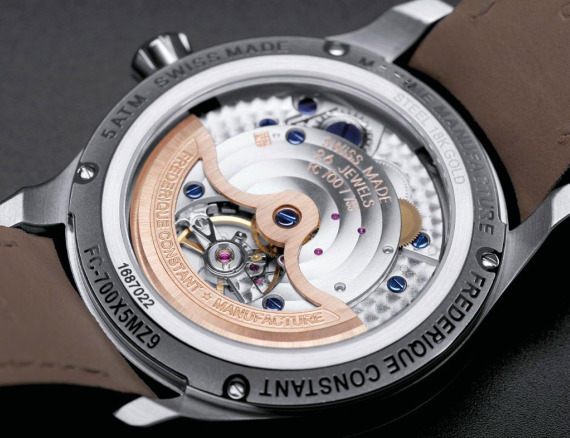
8. Observable Dial And Movement Decoration
Mid-range luxury watches should all have at least some manner of decoration, even if it is hidden on or in the movement and you cannot see it. This can be as simple as a special polished finish on an automatic movement rotor or a textured dial on the face of the watch – perhaps just in the chronograph subdials (if there are any). These little features help make the watch feel more valuable, and are proof that effort went into the little touches. Consider this (even if you think Las Vegas is a joke). What makes Las Vegas hotels feel nicer than most standard luxury hotels? Because the Vegas hotels are much more lavishly decorated with many little details that other hotels either neglect or don’t consider. The best Vegas hotels have real character, not just up-scale genericism. That is what I am talking about here. Thus, look for things such as machine engravings on the dial, as well as a variety of potential polishes on the movement. Sometimes, you’ll even have decorations on the case of the watch. Even your basic Rolex Submariner watch has some decoration on the movement rotor even though you wouldn’t know it from just seeing the watch on the outside. These features will make a watch more memorable to you.
9. Unique Design
There are essentially three types of overall watch designs looking beyond the mere genre. First are totally original designs that aren’t based on any specific watches from the past. These types of designs are often a mix between classic watch genres and the designers’ own interpretations of watch making. Then you have “homage” watches that attempt to strictly replicate an iconic, emblematic, or specific watch (e.g. all the Rolex Submariner homage watches, or “aviator” style watches). Then you have a mix between to two where a designer takes one or more well-known looks or styles and adds their own twist or two to the design execution. Pretty much every watch out there falls in one of these three types. While there are plenty of homage watches in the entry-level luxury watch range, at the mid-range level, you want to see as much originality in the design as possible. Above that, every watch should be almost totally original. I mean, that is part of what you are paying for right? You don’t want people mistaking your $3,000 watch for a $300 watch because they are both homages of the same style, even though the $3,000 watch is of a higher quality. Determining a unique design can also take a level of skill because if you don’t know about a lot of the watches out there, you might not know if the design is original or not. You can either ask around, or use your gut and decide whether or not the watch looks unique enough for your tastes.
10. Value Retention
This principle will really only apply to a few key brands, but you can do a lot to ensure your watch holds as much value as possible. The key factors in value retention other than having a watch from one of the major collector’s brands, Rolex, Breitling, Omega, etc.. is to have a watch that satisfies as much as the previously mentioned items to look for in a luxury watch. Having a good movement, attractive and original design, and high level of craftsmanship using quality materials will all keep demand for a watch healthy. Most of the time, you are not going to be able and sell a watch for more than you purchased it, especially at this range, but you don’t want to be insulted at what the market will offer you if you plan to sell your watch at some point. Then again, if you are the type of person who will die with his or her watch collection, none of this value retention nonsense is at all important.
Read part 1: Things to look for in an entry level luxury watch.
Top Things To Look For In A Luxury Watch Part 3: High-End Luxury

